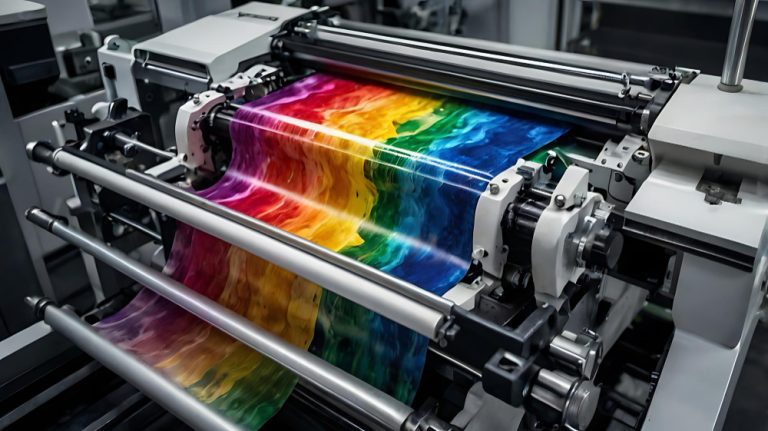DTF transfers color accuracy: details and limitations
DTF transfers color accuracy is a critical quality factor for designers and garment decorators who want reliable results across runs, fabrics, and lighting conditions, because differences in substrate, ink chemistry, and heat application can subtly shift hues, saturation, and edge sharpness from one batch to the next. DTF transfers offer a flexible path to vibrant designs, but achieving consistent color, fine detail, and durable performance requires attention to the printing workflow, substrate properties, post-press steps, and ongoing validation through color targets and live proofs. To guide your decisions, we’ll explore how color accuracy in textile printing is shaped by design intent, proofing, printer performance, and ink behavior, and how color management for apparel can tighten the loop between screen previews and finished garments, ensuring that your digital intent translates into physical fidelity. We’ll also cover practical strategies for minimizing variation, including selecting compatible fabrics, optimizing white underbases, calibrating devices, and building a repeatable testing cadence to surface and fix color drift before large runs, while clearly acknowledging DTF printing limitations. If you’re new to DTF or aiming to improve batch-to-batch consistency, this guide helps you build a repeatable process for reliable color reproduction and crisp print detail on fabric across a range of colors and textures.
Expanding the vocabulary around color fidelity, this alternative framing highlights how textiles interact with light, fabric texture, and wear over time, which can shift perceived hues even when the artwork remains unchanged. Color accuracy across fabrics is often discussed in terms of color fidelity, repeatable color management, and predictable print quality for apparel. By applying Latent Semantic Indexing principles, we can connect related topics such as color calibration, substrate compatibility, underbase strategies, pre- and post-press checks, and proofing workflows as part of a cohesive color-reproduction strategy. Speaking in this broader language helps teams align design intent with production realities, reducing surprises at the press and heightening overall consistency.
DTF transfers color accuracy: Key factors for reliable apparel printing
DTF transfers color accuracy hinges on aligning design intent with real-world output across fabrics, lighting, and production conditions. Designers should manage three interdependent domains: design and proofing, printer and ink performance, and post-press handling. Define a target color space (use sRGB for previews and convert to a printer ICC profile) and soft-proof the design against the actual print media to anticipate shifts before printing.
Printer and ink performance are the technical engine of color fidelity. Ink chemistry and color gamut, the white underbase on dark fabrics, print resolution, halftoning, and film quality all shape the final result. The white underbase is critical for true color, and its thickness and layering order must be tuned to minimize fogging. Recognizing DTF printing limitations helps you set realistic expectations for color vibrancy, edge sharpness, and print detail on fabric.
Color management for apparel: Optimizing print detail on fabric and consistency across runs
Color management for apparel begins with a formal plan: calibrated monitors, consistent lighting, printer ICC profiles, and standardized substrate selection. Soft proofing and direct-to-substrate checks align on-screen colors with printed results, reducing mismatches across runs. Establishing an SOP for color management and maintaining regular calibration helps prevent drift and ensures repeatable results.
To maximize print detail on fabric, control fabric texture, curing temperatures, and ink layering sequences. Always test prints on the final fabric type and color, and document ICC profiles, print settings, and curing times. Define a color-go/no-go threshold for each job and keep detailed records to facilitate consistent results across lots, reinforcing robust color management for apparel.
Frequently Asked Questions
What factors influence DTF transfers color accuracy in textile printing, and how can color management for apparel improve consistency across runs and fabrics?
DTF transfers color accuracy is achieved by a coordinated color-management workflow across design, printer/ink, and post-press. Key steps include: establish a color-management plan with calibrated monitors, standardized lighting, and printer ICC profiles to keep colors consistent across substrates; design and proof with a defined target color space (sRGB on screen, then convert to printer ICC profile), soft-proofing against the actual media, and using color targets to track shifts; understand printer/ink performance: inks have a finite color gamut; use a white underbase on dark fabrics to improve vibrancy; set appropriate resolution and halftone for fabric texture; consider substrate impact: base fabric color, fiber content, and weave influence color perception; select materials carefully; manage post-press steps: consistent curing times/temperatures, proper pre-press to remove moisture, and controlled layering to prevent color shifts; document everything (ICC profiles, substrate, settings) to reproduce results across runs.
What are the main DTF printing limitations that affect color accuracy and print detail on fabric, and how should designers design within these limitations to preserve print detail on fabric?
DTF printing limitations can cap color accuracy and edge sharpness. Primary factors include color gamut limits of DTF inks, which can reduce ultra-saturated hues, especially on darker fabrics where underbase reduces range; white underbase challenges, where solid whites may appear translucent if the fabric surface is uneven; fine detail and small text can blur on textured fabrics due to ink spread and halftone limits; wash durability and color fading over time, influenced by heat, detergents, and fabric finish; cost and speed trade-offs, as achieving color fidelity may require more test prints and calibration. Designers can work within these limits by using color palettes within the printer’s gamut and avoiding extreme neon hues; plan a strategic white underbase to preserve brightness on dark fabrics; test colors on the final fabric; designing with slightly bolder lines or larger text to maintain legibility after transfer; planning the layering order to minimize substrate interference and prevent color shifts; soft-proofing and producing physical proofs on the actual fabric to verify results; batch similar jobs and maintain color profiles to reduce drift; documenting substrate, ICC profiles, and curing settings to reproduce results.
| Aspect | Key Points |
|---|---|
| Design and proofing | Define a target color space (use sRGB for screen previews and convert to a printer-specific ICC profile); soft-proof the design; avoid extreme colors outside the device gamut; include color targets in test prints; document the ICC profile, print settings, and substrate used for each job. |
| Printer and ink performance | Ink chemistry and color gamut; white underbase as a critical step for true color on dark fabrics; plan ink layering (white underbase followed by color layers) to minimize fogging or bleeding; consider print resolution and halftoning; film and transfer quality affect color consistency and registration. |
| Fabric and substrate considerations | Base fabric color impacts brightness and accuracy (white/light fabrics yield best results); fiber content and weave influence ink absorption and edge sharpness; fabric finish and care affect long-term color retention; texture can alter detail and introduce moiré or feathering. |
| Production workflow | Establish a color-management plan with calibrated monitors and lighting; calibrate devices regularly and update ICC profiles; use soft proofing and substrate checks before production; control environmental variables (temperature, humidity, light); pre-press and align designs carefully; maintain consistent curing and finishing times and temperatures. |
| Limitations | Color gamut is finite and some vivid hues may not reproduce perfectly, especially on darker fabrics with heavy underbase; very small details may blur on textured fabrics; white underbase can be translucent on uneven surfaces; wash durability can vary; higher color control may require more test prints and longer production times. |
| Practical tips | Build a color kit of representative swatches; use ICC-supported, color-managed software with soft-proofing; start with a strong white underbase strategy for dark fabrics; test on the final fabric before full production; optimize for legibility by adjusting stroke widths and text size; plan color layer order to minimize substrate interference; set a color-go/no-go threshold and document all settings, substrates, and profiles. |
Summary
DTF transfers color accuracy hinges on a well-coordinated color-management workflow, a clear understanding of ink and fabric behavior, and a realistic view of the technique’s limitations. By integrating careful design proofing, printer-specific color profiles, substrate-aware curing, and thorough testing, you can maximize color fidelity and detail across garments. While some vivid hues or ultra-fine details may present challenges, a disciplined approach to color management and process documentation enables reliable, repeatable results that align with your brand’s visual standards. In short, with the right tools, settings, and tests, you can achieve impressive color accuracy in DTF transfers while delivering crisp detail and durable performance on diverse fabrics.



